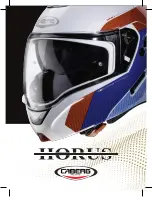
V E N G E A N C E M O T O R C Y C L E S O W N E R S M A N U A L
- 10 -
Vengeance Motorcycles, Mira Loma, CA USA • 866-483-6432 • www.VengeanceMotorcycles.com
© 2003 Vengeance Performance Products, LLC All Rights Reserved • VOM 1st Edition Rev 2.3 06/03
KNOW YOUR MOTORCYCLE
To be a safe rider, get to know your motorcycle extremely well. It’s very different from a car and makes more
demands on the operator. The motorcycle goes and turns and stops smoothly according to your degree of skill and
knowledge.
Get to know your owner’s manual; not all motorcycles are exactly alike. Types range from street machines (large
touring bikes, cruisers, sport, and traditional) to off-road and dual-purpose bikes. The manual gives you many
specifics you will find helpful in understanding and maintaining the bike you’ve chosen.
A close relative to the motorcycle – the scooter – is different from most motorcycles and you’ll need to find out its
particular features. Some have automatic transmissions, as well as starter interlocks. As with other small-
displacement machines, certain models may not be allowed on high-speed, limited-access highways.
It takes a long time to become properly familiar with a motorcycle, so it is best not to lend it or borrow one. Think of
your motorcycle as being as personal as a toothbrush.
The Controls
Over the years, the basic controls on motorcycles have been standardized.
Put the bike on the centerstand and sit on it. Become familiar with the controls and how to use them. Work the levers
and pedals. If something isn’t within easy reach of fingers or toes, maybe it can be adjusted to suit you. Check your
owner’s manual.
Practice with the turn signals. Find the horn button, so you won’t have to look for it when somebody starts backing out
in front of you. Figure out how the dimmer switch works before it gets dark.
Do become familiar with the RESERVE fuel valve if there is one on your machine. When you are running along the
highway and your engine burbles, indicating it is running out of fuel, you want to be able to turn that reserve on
without a second’s thought. It is not fun or safe to be fumbling around when you are in gear and moving.
Shifting Gears
Starting off and changing gears requires coordination of the clutch and throttle and gearshift lever. If you don’t do
things right, the amount of control you have over the bike is lessened.
To start off, pull in the clutch, shift into first gear, roll on the throttle a little, and ease out the clutch. You will become
familiar with the friction zone (that’s where the clutch begins to take hold and move the bike), and you add a bit more
throttle. You don’t want to stall the engine, nor do you want to over-rev it. There’s a sweet spot in there; find it. Shift
while traveling in a straight line. Shifting in a curve is not good practice, and something to be avoided.
Become familiar with the sound of your engine, so you can tell when you should shift without looking at your
instruments.
When you downshift to a lower gear, you should (in one swift, smooth movement) be able to squeeze the clutch, rev
the engine a little to let it catch the lower gear smoothly, and shift down.
When you come to a stop in traffic, leave the bike in first gear with the clutch disengaged (just in case you want to
accelerate out of there in a hurry). Who knows what may be coming up behind you.
Braking
Don’t ever forget: The front brake on your motorcycle can supply as much as 70 percent or more of your stopping
power. The single most important thing you can learn about braking is to use that front brake every single time you
want to slow down.
Always apply both the front and the rear brakes at the same time. If necessary, apply them hard, but not so hard that
you lock up either wheel. A locked wheel, as well as causing the bike to skid, results in downright inefficient braking.











































